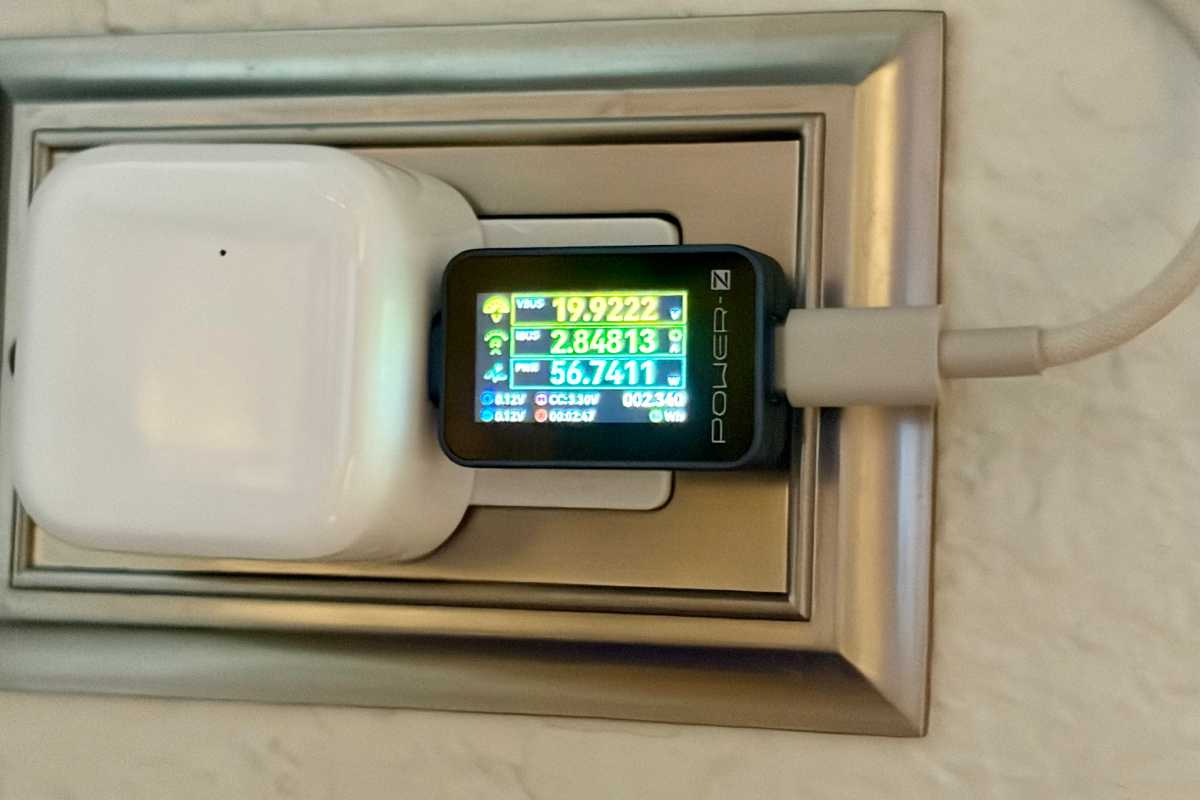When Apple launched the brand new iPhone 17 and iPhone 17 Professional/Max, it highlighted their even sooner fast-charging talents. With an applicable USB-C charger that may ship no less than 40 watts, it will probably cost as much as 50 % in simply 20 minutes, the place prior iPhones took half-hour (50 % longer).
It additionally launched an intriguing new energy adapter. The 40W Dynamic Energy Adapter with 60W Max is nothing if not complicated. It’s small—surprisingly so for an Apple charger with this capability—and seemingly made for iPhones. However what does “60W max” even imply? If it will probably go as much as 60 watts, shouldn’t it simply be known as a 60-watt energy adapter? And what’s it even for, if not one of the new telephones want it to cost as rapidly as attainable?
Let’s break down this new energy adapter and what it will probably do.
Dynamic Energy Defined
Apple’s new USB-C energy adapter can maintain steady energy of as much as 40 watts utilizing the USB-PD (USB Energy Supply) commonplace. That’s as much as 20 volts at 2 amps or 15 volts at 2.67 amps, if you wish to get technical.
However the adapter helps a brand new USB-C charging commonplace known as AVS (Adjustable Voltage provide) that permits it to spice up the ability as much as 3 amps with out renegotiating the voltage supply, going as much as a attainable 3 amps at 20 volts, or 60 watts.
So if it will probably do 60 watts, why isn’t it only a 60-watt energy adapter? Properly, the ability adapter can solely maintain that price till both it or the machine it’s charging can’t keep it. Normally, that occurs as a result of it will get too sizzling. In line with some unbiased assessments, it appears to take about 15-20 minutes at 60 watts for Apple’s energy adapter to get too sizzling and again off. That’s why it says “60W max” somewhat than being listed as only a 60W energy adapter: it received’t maintain 60 watts on a regular basis.
There’s one other USB-PD commonplace known as PPS (Programmable Energy Provide) that’s similar to AVS, however truly a very completely different protocol and fully incompatible. Various current third-party USB-C chargers assist this commonplace, however Apple doesn’t. Every has its personal tradeoffs from a geeky engineering perspective, however so far as shoppers are involved, they’re not all that completely different. The AVS commonplace appears to permit extra fast and fine-grain changes, so it will probably keep nearer to the best energy stage as charging circumstances change.
Will it cost your iPhone extra rapidly?
Quick reply: Nope!
Whereas Apple’s new iPhones would possibly assist the brand new USB-PD AVS commonplace, they by no means actually appear to attract greater than round 25-28 watts, it doesn’t matter what adapter you pair them with. Apple recommends no less than a 40W energy adapter to maximise charging pace (as no energy adapter is completely environment friendly), however the increase as much as 60 simply isn’t needed or useful right here.
I attempted the brand new “40W with 60 Max” energy adapter on the iPhone 17 and in contrast it with a few different, older energy adapters. In each case, the iPhone 17 charged at about the identical price.
Apple 61W USB-C Energy Adapter: 20 minutes charged from 0 to 42 %, the max energy draw was ~26W.
Apple 40W/60W Dynamic Energy Adapter: 20 minutes charged from 0 to 41 %, the max energy draw was ~26W.

Foundry
Nevertheless, this new Dynamic Energy Adapter will ship extra juice to your MacBook or different higher-power fashionable Apple Gadget. We had no downside charging a M2 MacBook Air at a price of 57 watts.

Foundry
Whereas Apple’s new dynamic energy adapter’s core profit (the power to spice up to 60 watts for some time and repeatedly fine-tune charging price with suitable gadgets) doesn’t actually do an entire lot for iPhone customers. iPhones simply don’t draw sufficient energy for it to matter.
The upper max energy price is of profit to these with fashionable Apple merchandise that may draw extra energy, although, and we suspect this adapter is a little bit of future-proofing for iPhones and iPads that will have the next peak cost price when utilizing an influence adapter that helps the USB-PD AVS commonplace.

